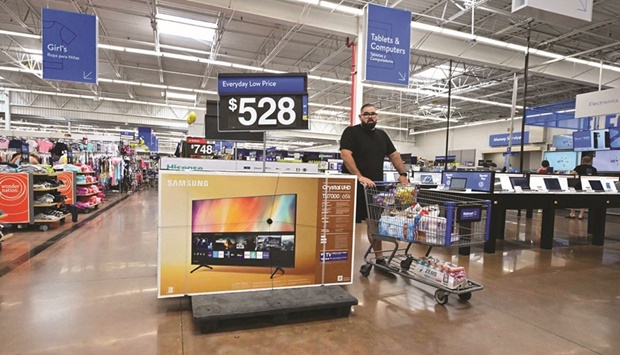US consumer spending fell in May for the first time this year and prior months were revised lower, suggesting an economy on somewhat weaker footing than previously thought amid rapid inflation and Federal Reserve interest-rate hikes.
Purchases of goods and services, adjusted for changes in prices, decreased 0.4% after a downwardly revised 0.3% gain a month earlier, Commerce Department data showed on Thursday. Spending on services advanced while outlays for goods declined.
The personal consumption expenditures price index, which the Federal Reserve uses for its inflation target, rose 0.6% from a month earlier and was up 6.3% since May 2021. The core PCE price index increased 0.3%, less than expected. It was up 4.7% from a year ago, the smallest gain since November.
The median forecasts in a Bloomberg survey of economists called for a 0.3% decline in inflation-adjusted spending from the prior month and for the overall price index to be up 6.4% from a year earlier.
Unadjusted for inflation, spending rose 0.2% from the prior month, while personal income increased 0.5%.
While spending disappointed expectations, it also showed demand isn’t collapsing. Demand for services proved resilient, underscoring a long-anticipated shift in consumer preferences from goods to services. Spending on international travel strengthened in May.
Even so, the slowdown in consumer spending – the main driver of the US economy – adds to growing concerns about the economic outlook. Household sentiment is at a record low, recession fears are growing, and the labour market, while still robust, is showing some early signs of softening.
Separate figures on Thursday showed applications for jobless benefits fell slightly last week, though remained near the highest level since January.
Stocks opened lower, Treasury yields eased and the dollar fell after the data.
Inflation, while showing signs of stabilising, is still eroding Americans’ pay. Households are facing rising prices across the economy, including near-record costs for gasoline. The Fed, which earlier this month raised interest rates by the most since 1994, will take the latest figures into account at their July meeting when deciding whether to once again hike rates by 75 basis points, or opt for a 50 basis-point increase.
On Wednesday, Fed Chair Jerome Powell said he and his colleagues “hope that growth will remain positive,” noting that the economy is “well positioned to withstand tighter monetary policy.” But he also acknowledged the task of avoiding a recession has become more challenging in recent months.
The saving rate rose slightly in May to 5.4%, a three-month high, but was still near its lowest since 2009. High inflation has prompted Americans to draw down their savings since the end of last year.

A man pushes his cart through a store in Rosemead, California. The slowdown in consumer spending u2013 the main driver of the US economy u2013 adds to growing concerns about the economic outlook. Household sentiment is at a record low, recession fears are growing, and the labour market, while still robust, is showing some early signs of softening.
